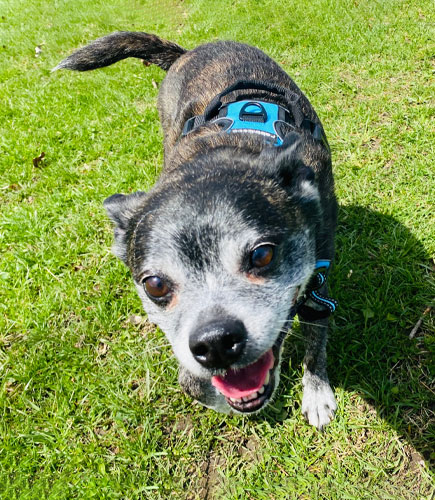Canine Senior Care
Everything you need for your senior dog.
Senior Dog Care Guidelines
At what age are our dogs considered “seniors”? It might be younger than you think! The 2019 AAHA Canine Life Stage Guidelines define senior as “the last 25% of estimated lifespan”. This means there is no uniform cut-off for all dogs, but an approximation is:
Dog size / Age considered senior
- Small (1-20 lbs), 8-10 years
- Medium (20-50 lbs), 7-9 years
- Large (50-90 lbs), 5-7 years
- Giant (>90 lbs), 5-6 years
There are many additional considerations for managing a senior pet. This age group is more likely to develop diseases, including anything from arthritis to cancer. They have slightly low energy needs, and become prone to obesity. They may develop quality of life concerns, and our goals for their care may change.

Prevention is Key
Early detection and management of senior conditions is extremely important, because many conditions are not able to be cured but can be slowed down and managed to maintain their quality of life. Some examples include:
Nutrition Matters
Early dietary management to prevent obesity can extend average life expectancy anywhere from 6 months to 2½ years.
Comfort is Key
Arthritis leads to loss of cartilage which cannot grow back, and can cause loss of muscle which is hard to regain for senior pets. Early management is key.
Intervention Saves Lives
Chronic kidney disease is not curable, but dogs who have early diagnosis and management can live 3 times as long after diagnosis compared to dogs without any intervention.





